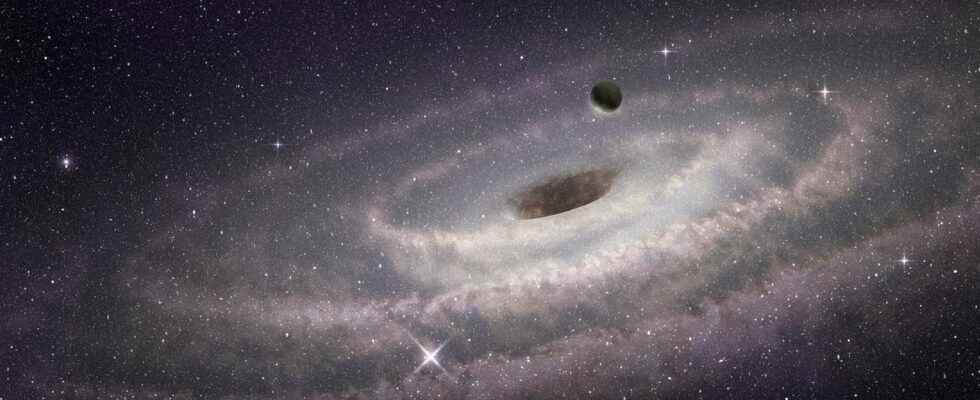The supermassive black hole that nests in the heart of the Milky Way was baptized about fifty years ago. Today it is known not only to researchers, but also to amateur astronomers, as Sagittarius A*. Let’s dive into the center of our Galaxy to understand why.
You will also be interested
[EN VIDÉO] Visit the supermassive black hole at the heart of the Milky Way in virtual reality Exploring the heart of our galaxy as if you were there is now possible thanks to a new VR experience combining the cutting edge of astronomical observation and computing.
Take a massive galaxy. Then aim for the center of this galaxy. And you’ll have a good chance of finding one of those astronomers qualify as black holes supermassive – because they can reach up to 40 billion masses solar.
The mass of our Galaxy, the Milky Wayseems to be of the order of 1012 solar masses. Enough to make it one of those massive galaxies that hide, in their heart, a supermassive black hole. The one that the researchers named Sagittarius A*. The most recent observations estimate that its mass would be of the order of 4 million solar masses. For comparison, the supermassive black hole at the center of the galaxy M87 – the one whose portrait painted by theEvent Horizon Telescope (EHT) in 2019 constituted the first-ever glimpse of the environment of such a black hole – is about 1,600 times more massive.
To return to the Milky Way, know that its center was located in 1918 in a region of the sagittarius constellation. The trouble is that interstellar dust has long obscured the vision that astronomers had from this region. Dust that blocked the passage to visible light.
A powerful source in the constellation of Sagittarius
Until researchers – Karl Jansky in the lead, an engineer of Bell Telephone Laboratories – discover, at the beginning of the 1930s, that waves radio may come from beyond our Earth. And the powerful emission they then detected seemed to be coming to us from the center of the Milky Way. According to estimates published some twenty years later. In 1960, another team confirmed the direction and distance of this source of radio waves. Finally the brightest of the constellation of Sagittarius. Which finally earned him the name of Sagittarius A.
But it still took a few years for this emission to be finally associated with a very bright and compact object, such as a supermassive black hole. It was then, in the mid-1970s, that the name Sagittarius A* appeared. With an asterisk to indicate that it designates a black hole. Even if it was not until the early 2000s that the nature of Sagittarius A* was really confirmed. Works that earned their authors, the German Reinhard Genzel and the American Andrea Ghez, the Nobel prize of physical 2020.
Interested in what you just read?
